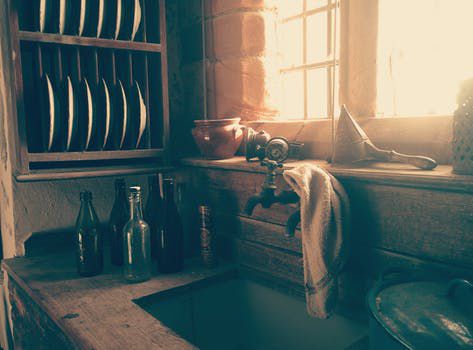Water Treatment Pilot Holds Promise for Consumer Protection, Public Health
Posted on March 3, 2017 by Janice Thompson
Tags, Water/Wastewater

On Wednesday March 1, 2017, the Portland City Council discussed a treatment pilot to determine the best options for improving the level of corrosion control to reduce the potential for lead to leach from indoor plumbing fixtures into a building’s drinking water. CUB supports the treatment pilot due to the importance of taking prudent and scientifically based actions to improve water quality and public health.
See our July 2016 blog for background on lead use and hazards.
Five important Portland-specific background points:
- Portland never used lead service lines, the small pipes that bring water to buildings from the service mains in the street.
- Up until the 1940s, Portland used short pieces of lead pipe called pigtails or goosenecks to connect galvanized service lines to the water mains. The Water Bureau removed those older pigtails in the 1990s.
- Multnomah County Health Department identifies lead-based paint as the greatest lead exposure risk in the Portland area, particularly in homes built before the 1960s.
- Indoor plumbing solder and fixtures that contain lead cause water-related lead exposure. In Portland, homes with copper pipes joined with lead solder, particularly those built between 1970 and 1985, are most at risk for lead leaching. Older homes, however, could still be at higher risk depending on the timing of any plumbing remodeling. Indoor brass plumbing fixtures installed before 2014 can also contain lead, though pre-1985 brass fixtures have a greater likelihood of containing lead.
- The Portland Water Bureau has taken corrosion control treatment steps since 1997 with updates along the way. The most recent water corrosion control study began in 2014. One factor in that timing is that shifting from open reservoirs to seismically resilient closed reservoirs is considered likely to increase the effectiveness of corrosion related treatment.
Moving to corrosion control treatment
Key findings from the 2014 corrosion control study are available now and support the feasibility of enhanced treatment steps, though the final report is still in the works. These results, along with an October 2016 exceedance of the lead action level, contributed to the Water Bureau’s request that the City Council approve the corrosion control treatment pilot a few months earlier than originally anticipated. Accelerated action is also prudent given recent steps to increase the pH of Bull Run water in an interim Lead Reduction Plan requested in December by the Oregon Health Authority.
The corrosion control treatment pilot will determine the most effective treatment chemicals for our water system. Further pH adjustment and increasing water alkalinity seem to be the most likely approach for Portland. Each water system is different so details will vary, but it is worth noting that other water utilities commonly use this approach. The Water Bureau will determine the best treatment chemicals after completing the pilot, which will take up to a year due to the need for testing during all seasonal variations.
Regulatory signals point to a treatment pilot that will focus on determining the best additional treatment for Portland rather than asking if more treatment is needed. This is understandable given public health concerns, but is a topic that CUB will closely monitor. Design and construction of a treatment facility will require another round of City Council approval, and CUB will continue its due diligence to ensure cost effectiveness and value to ratepayers.
A final note concerns why replacing home plumbing is not a preferred approach. The cost of corrosion control treatment is significantly less than replacing home plumbing in high risk homes. Even if home plumbing replacement were cost effective, this approach does not comply with the Lead and Copper Rule according to both the Environmental Protection Agency (EPA) and Oregon Health Authority (OHA).
EPA and OHA regulate the safety of water supplied to all households. Therefore, shifting the focus to indoor plumbing feature replacement introduces significant uncertainty about evaluating success. For example, I live in a house where all the visible pipes are galvanized, and it is old enough that it would not be included in the high-risk pool for plumbing replacement. But I may not know that a previous owner used copper pipe with lead solder during a remodeling project because those pipes are behind a bathroom wall. So even if my home were not in the high-risk group, if the plumbing replacement approach is used, how would anybody know about the need to replace those copper pipes? In other words, how can you really be sure that all the home plumbing that needs removal is gone? Conversely, without extensive testing, how can you be sure that you are not removing acceptable home plumbing? The bottom line is that the Portland Water Bureau, like all water suppliers. is regulated to ensure water safety and not the indoor plumbing through which the water flows.
For more information, see https://www.portlandoregon.gov/water/article/123083.
To keep up with CUB, like us on Facebook and follow us on Twitter!




03/15/17 | 0 Comments | Water Treatment Pilot Holds Promise for Consumer Protection, Public Health